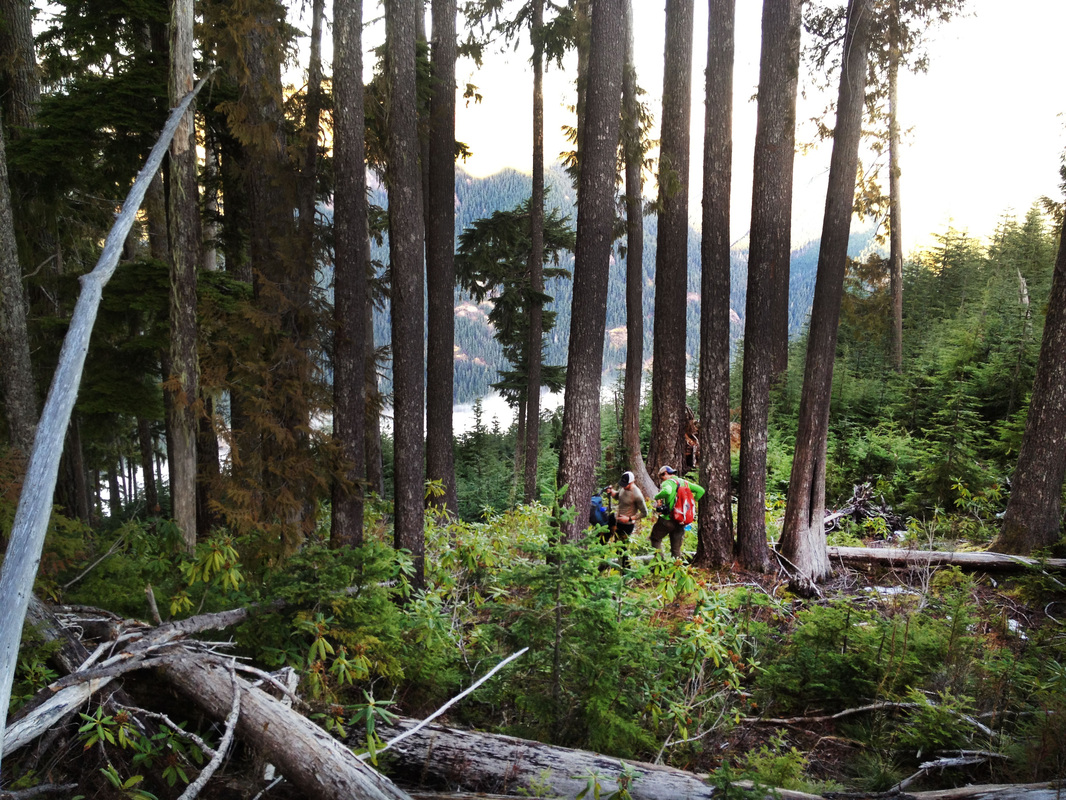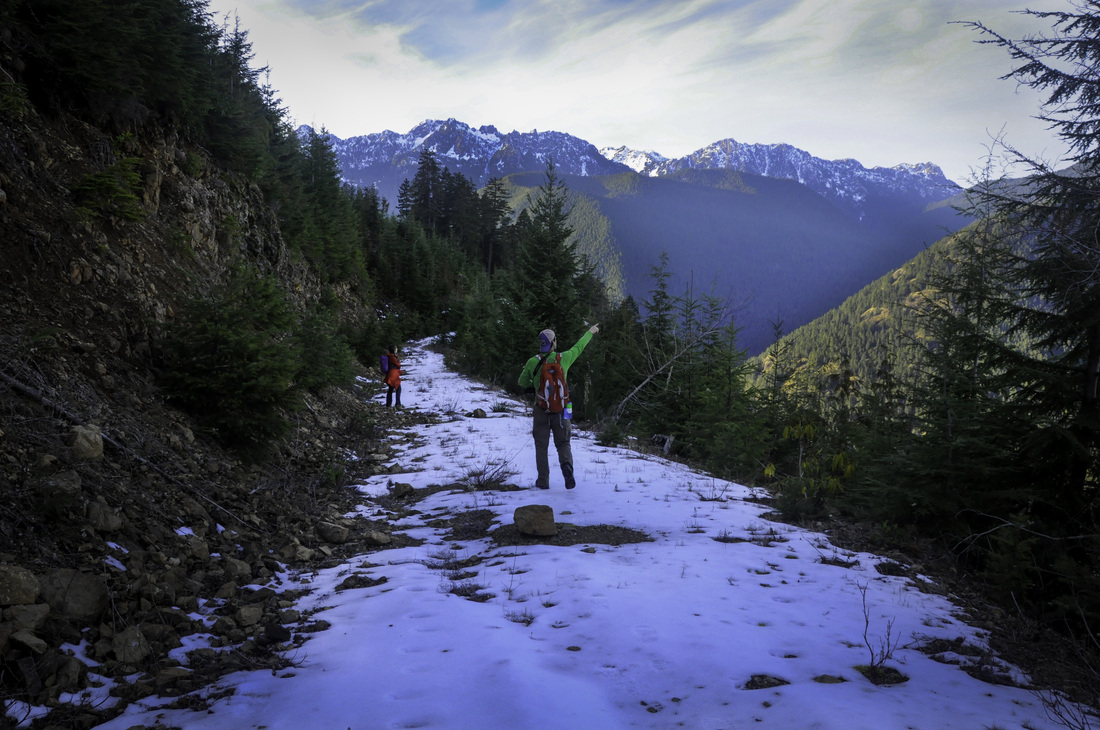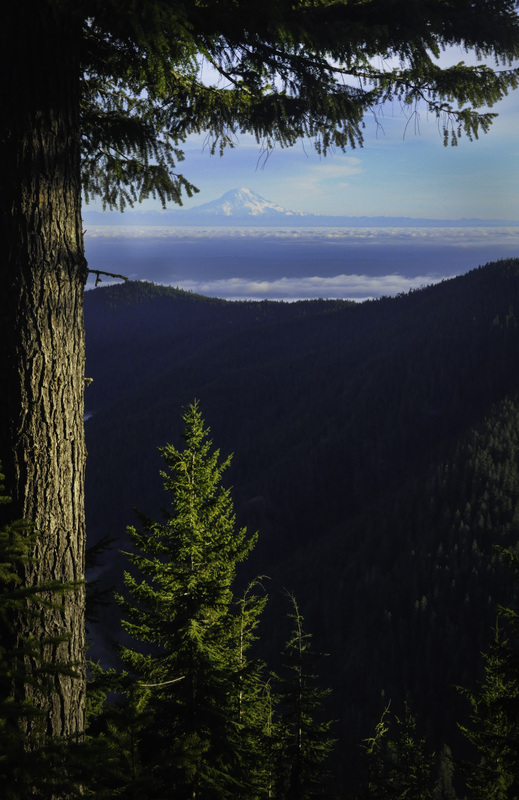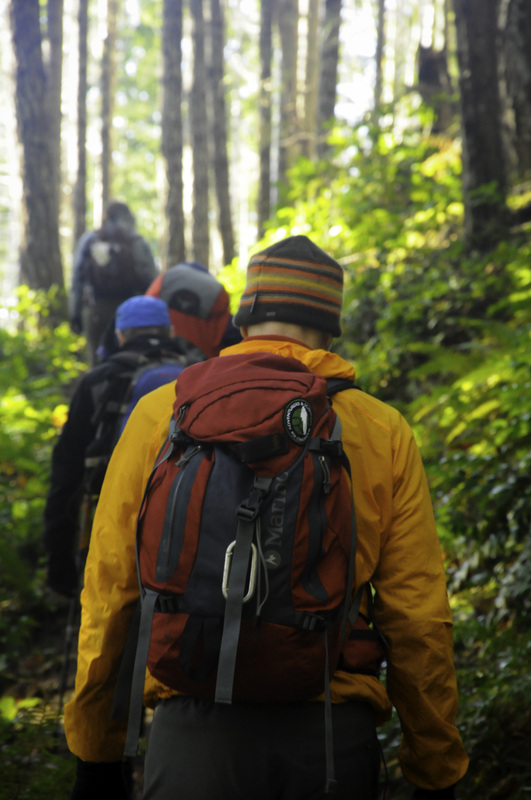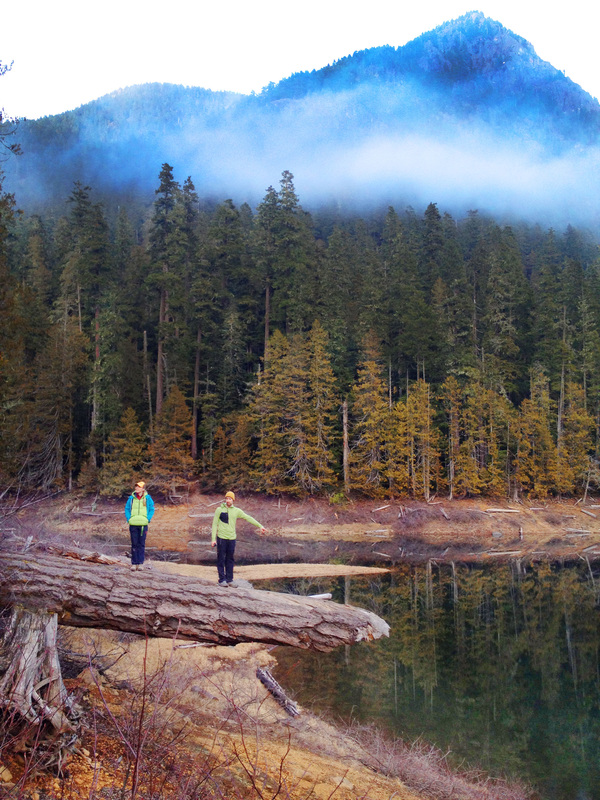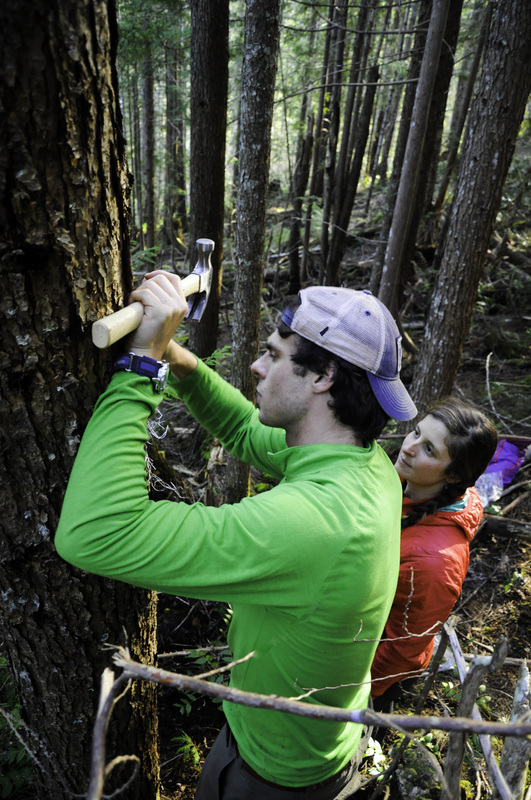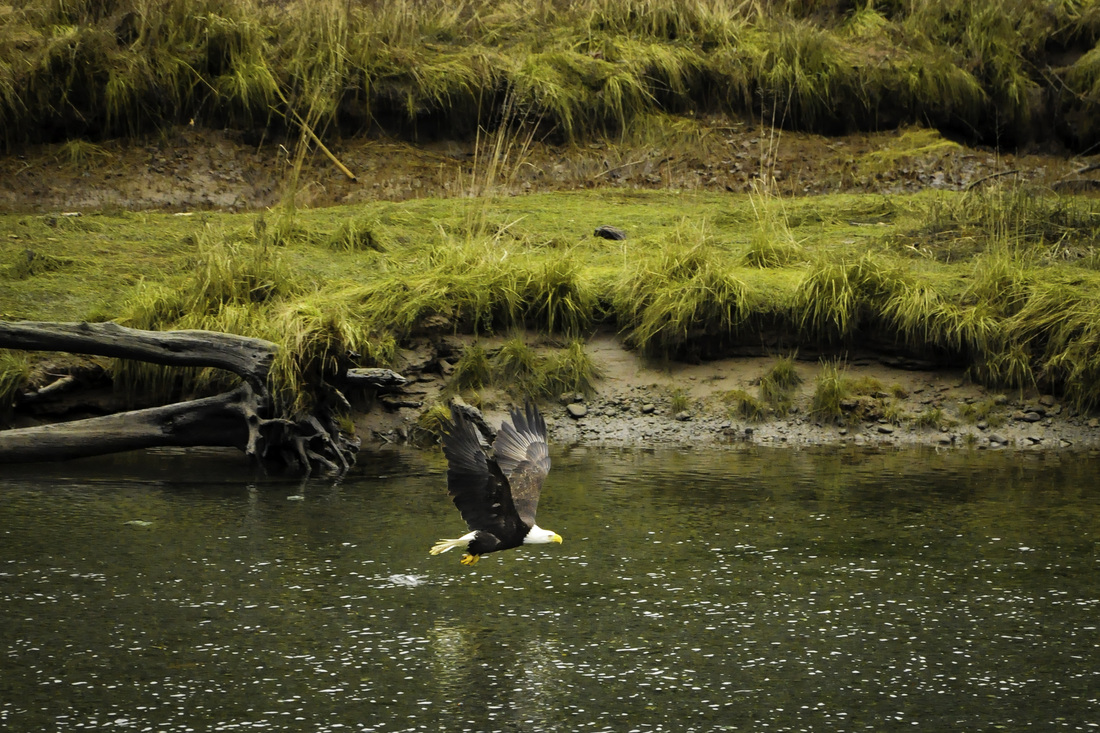Searching for Elusive Martens on the Olympic Peninsula
Jordan Holsinger is ASC’s Scientific Manager and joined the Marten Survey as a guide this year. You can read his bio here.
From Jordan:
We rolled into the driveway at the USFS house in Hoodsport, WA at about 10:30 AM on Friday, January 17th, vehicle loaded to the brim with food and gear and all our packs tied to the roof. The previous 24 hours consisted of furiously packing for the variable winter conditions in the Pacific Northwest, flying from Bozeman to Seattle, buying groceries and supplies for 30 hungry adventurers, getting a few hours of sleep at the home of a gracious ASC supporter and driving out to the Olympic Peninsula. We were finally ready to go look for the elusive coastal Pacific Marten (Martes caurina).
The truth is that the hard work started long before we left Bozeman. For years USFS researchers led by Betsy Howell have been searching for signs of marten in the Olympic National Forest (ONF). Though ONF is prime marten habitat, there is concern that the species has extirpated from the region. The last confirmed record of marten on the ONF was the discovery of a dead juvenile in 2008. But Betsy has continued looking for them. Last year ASC joined the effort and organized the first ASC-ONF marten survey project where 12 camera trap stations were established in 6 different drainages. This project yielded thousands of photos of dozens of different species, including the marten’s cousin the fisher, but notably lacking was any sign of a marten. Last year’s efforts led to the coastal Pacific Marten being listed as “critically imperiled” by NatureServe, but Betsy says:
“If martens still exist in greater numbers on the Olympic Peninsula, then they may be doing so in higher, isolated pockets of habitat. Getting to these areas can be challenging, particularly during the winter months, which are the most ideal for carnivore surveys. Having volunteers vetted through ASC who are extremely fit and extremely motivated would greatly add to the likelihood of success for such an effort.”
“If martens still exist in greater numbers on the Olympic Peninsula, then they may be doing so in higher, isolated pockets of habitat. Getting to these areas can be challenging, particularly during the winter months, which are the most ideal for carnivore surveys. Having volunteers vetted through ASC who are extremely fit and extremely motivated would greatly add to the likelihood of success for such an effort.”
This year we are back in the ONF with a larger team, more cameras and more funding thanks to a generous grant from the National Forest Foundation. We arrived on the Olympic Peninsula a few hours before our 24 volunteers showed up for the weekend, just enough time to set up a couple of camera stations and brush up on our skills. Our Friday afternoon foray into the ONF brought us well above sea level and above the inversion that had socked in the lower elevations into the warm sunshine with incredible views of Mt. Rainier miles away. The Northwest has been experiencing an unusually warm and dry winter so far which is not ideal for martens, but makes for very enjoyable field work.
The volunteers come from all walks of life – from arborists to M.D.’s and engineers to retirees. They also have traveled from across the Pacific Northwest, some traveling from as far as Portland, OR. But they all share something in common: a love of the outdoors and a strong desire to participate in protecting it.
Saturday we split up into groups and had a hands-on training session teaching volunteers how to set up the cameras and bait and what the best marten habitat looks like. Then we split into groups and headed into the forest. Four of the six groups headed out for overnight trip to their camera locations while the others of us made multiple day trips. The hikes in are often steep and sometimes rugged, climbing nearly 1,000 ft per mile of trail. Once in the general vicinity we had to bushwhack off trail to find ideal marten habitat – old growth forest with plenty of down wood and cover on the ground – and two trees that were approximately 15 ft apart and directly on a north-south line to set up the camera and bait.
Setting up camera traps is relatively simple, but extremely important to get correct. If you don’t get the angle just right you’ll miss what you’re looking for, drawing a fine line between success and failure. But at each spot everyone would work as a team getting the camera installed and the bait on the tree, testing and retesting everything to make sure we would collect the best data. Every two weeks our adventure volunteers will make the trek back to the same spots to dutifully check and maintain their cameras.
Now comes the hard part as one volunteer, Jace, pointed out. Now we just have to wait and see what we get.
This is the second year ASC has worked with the ONF on marten surveys. You can get more information about the project on our ONF marten project page and read last year’s project report. You can keep up with ASC by subscribing to ASC’s blog, liking us on Facebook and following us on Twitter (@AdventurScience), Instagram (@AdventureScience) and Google+.
This is the second year ASC has worked with the ONF on marten surveys. You can get more information about the project on our ONF marten project page and read last year’s project report. You can keep up with ASC by subscribing to ASC’s blog, liking us on Facebook and following us on Twitter (@AdventurScience), Instagram (@AdventureScience) and Google+.

